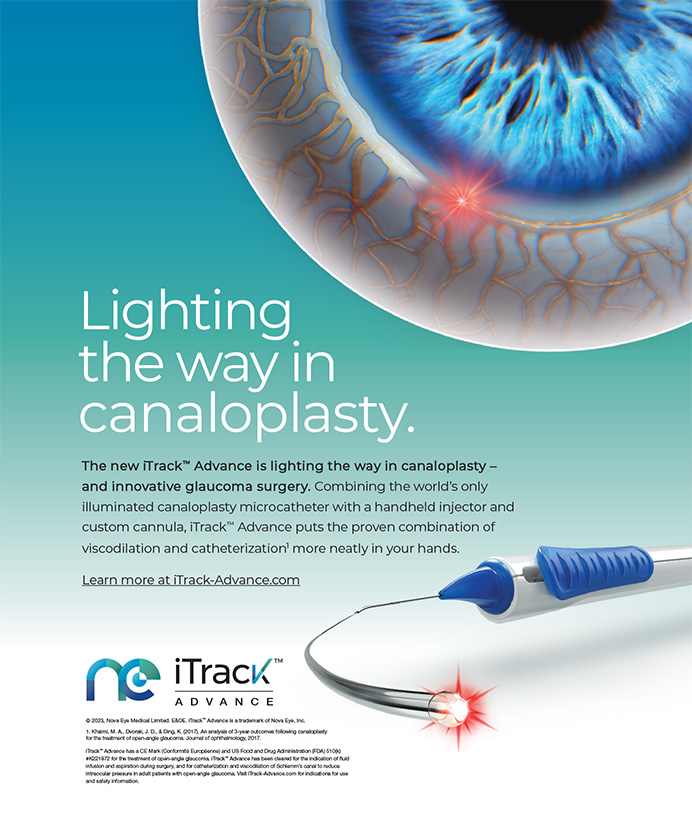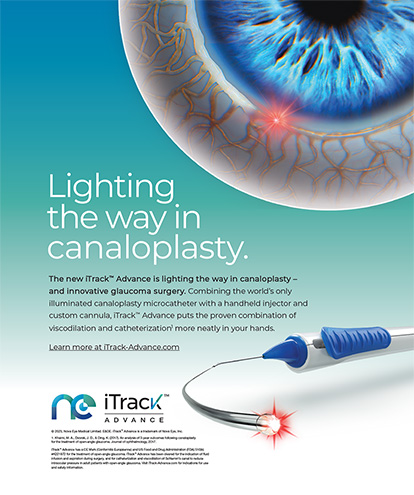More than any other current measure, today’s leading cataract specialists judge their surgical outcome by the accuracy of their refractive result. Perhaps more importantly, patients’ satisfaction increasingly hinges on this single point. Certainly of benefit are continued refinements in preoperative measurements and calculations as well as advances in surgical techniques to influence and control the patient’s refractive state. Nevertheless, strategies to deal with residual postoperative refractive error remain a high priority. These patients require the same degree of refractive precision as those undergoing laser corneal surgery (ie, a tolerance of less than ±0.50 D for residual sphere and cylindrical error). How does one reach this goal?
IDENTIFYING THE PROBLEM
When choosing a managerial strategy, one must be sure to address the appropriate problem. Recently, a great deal of attention has been directed toward the assessment and treatment of the precorneal tear film and coexisting external disease. As the number of cataract patients with a history of keratorefractive surgery grows, ophthalmologists must also rule out subtle degrees of irregular astigmatism through careful topographic and wavefront testing. Most helpful in this regard may be a trial with rigid contact lenses. Surgeons must also identify latent posterior segment disease, for which an evaluation with optical coherence tomography is indispensible. Lastly, ophthalmologists usually treat early posterior capsular opacification before addressing patients’ residual refractive error in order to stabilize the lens’ position and provide the best possible refraction—unless they are considering an IOL exchange.
THROWING OUT THE COOKBOOK
When deciding how to surgically manage residual refractive error, a simple “cookbook” approach is not possible. Each case requires careful study before the ophthalmologist can create an individualized strategy. In general, the goal is to perform the least invasive procedure that will give the patient the highest likelihood of achieving his or her refractive goal.
CHOOSING A PROCEDURE
IOL Exchange
The decision to exchange the IOL has become rather rare with today’s high-quality IOLs. Most patients adapt to their new optical status if given sufficient time and appropriate support. Surgeons should undertake a thorough diagnostic workup and assess all optical, systemic, and psychological factors before committing to a lens exchange. In many cases, patients simply need reassurance that their status is stable, expected, and acceptable. This statement typically needs to come from the surgeon who implanted the IOL. If in doubt, the physician may wish to obtain a second opinion before performing a lens exchange.
Piggyback IOLs
Many patients do well with a properly chosen, secondary piggyback IOL for residual spherical error. This is especially true when laser corneal surgery is contraindicated, such as in patients with severe dry eye disease. It is important to choose an appropriate three-piece lens design that may be implanted in the sulcus. One option is the STAAR Elastimide IOL (AQ5010V; STAAR Surgical Company, Monrovia, CA), which has a slightly larger optical diameter and longer haptic. Another possibility is the Sofport AO lens (Bausch + Lomb, Rochester, NY), which tolerates decentration and tilt.
As a general rule, the surgeon implants a secondary IOL with a power equal to that of the measured myopic error or one-and-a-half times that of the hyperopic spectacle error.
Limbal Relaxing Incisions
Limbal relaxing incisions (LRIs) are easily performed in an office setting to address residual astigmatism, especially if the patient’s spherical equivalence is close to zero. Significant spherical error coupled with residual cylinder is better treated by an excimer laser procedure. LRIs may be touched up if they were previously performed in the setting of an undercorrection. LRIs are not recommended if the patient’s original refractive error was overcorrected or the individual sustained a large swing in the resultant axis. To avoid further corneal destabilization, additional incisional surgery is typically avoided in eyes that had early radial or astigmatic keratotomy.
Excimer Laser Ablation
The most common approach to treating residual refractive error is excimer laser ablation (Figure 1), although this option is still markedly underutilized with regard to its potential impact on and benefit for patients. I think the biggest obstacle may be surgeons’ reticence about discussing and offering the technology to cataract patients, even those receiving presbyopiacorrecting or toric lenses. LASIK can often be used safely in this setting. For the typically small degree of refractive error seen in these cases, however, PRK is often more appropriate, particularly if there is preexisting dry eye disease or anterior corneal membrane dystrophy.
Accessing an excimer laser, learning the technique or partnering with another competent surgeon, and integrating this technology into the cataract offering are becoming a requisite for success in today’s lens-based surgical environment. Assuming proper wound construction, I have found that LASIK may be safely performed several weeks after the IOL’s implantation. The main determiner of timing is the documentation of a stable refraction and corneal topography.
For surgeons who are comfortable with the techniques, mini-RK can treat small amounts of residual myopia, and conductive keratoplasty may be helpful for residual hyperopia and hyperopic astigmatism.
CONCLUSION
Finishing the job, as it pertains to cataract patients’ refractive outcomes, is a crucial determiner of their satisfaction. It requires a commitment and investment on the ophthalmologist’s part, but the reward for patient and surgeon alike is very much worth the effort.
Louis D. “Skip” Nichamin, MD, is the medical director of Laurel Eye Clinic in Brookville, Pennsylvania. He is a medical monitor for Bausch + Lomb. Dr. Nichamin may be reached at (814) 849-8344; nichamin@laureleye.com.


